Ryan Hall's Blog, page 253
May 23, 2016
What to Expect at the REI Outessa Summit for Women
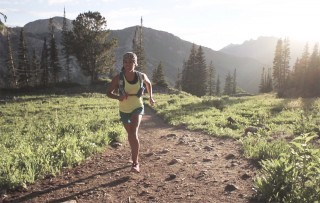
Courtesy of REI Outessa Summit
REI is sponsoring the first event series that focuses on outdoor education and recreation specifically organized for women. Hundreds of women will have the opportunity to participate in more than 200 outdoor activities, including trail running, led by 60-plus guides as part of a three-day experience, which also incorporates talks and guidance from female elite athletes of several disciplines.
The REI Outessa Summit aims to welcome newcomers, giving them a chance to explore different outdoor activities and sports, but at the same time appeal to longtime lovers of the outdoors in connecting with one another and building female camaraderie.
“When you get a group of women together, I typically find that when they see someone else is doing it, that they can do it too—it’s not out of the realm of possibility,” said Julia Stamps Mallon, co-founder and vice president of business development of the REI Outessa Summit, and longtime distance runner having competed in two U.S. Olympic Trials Marathons. “We really just want people to challenge themselves within their comfort levels and try something new.”
Originally when Mallon and her business partner/cofounder Bart Davis—who both previously worked at Destination Races—approached REI with the concept of Outessa, it mainly focused on trail running. But after many discussions the event expanded to more outdoor activities that would allow more accessibility and reflect the overlapping of interests in the outdoor sport scene.
The first two events of the summit will take place in Kirkwood Resort near Lake Tahoe, Calif., from Aug. 19-21, and in Powder Mountain near Salt Lake City, Utah, from Sept. 9-11. A variety of lodging from campsites to cabins, plus food and end-of-day libations are all included.
Depending on a registrant’s self-chosen schedule, the weekend could consist of a wide range of activities and classes such as camping, backpacking, kayaking, outdoor cooking, mountain biking, paddle boarding, climbing, yoga, hiking, etc. Mallon says each class will consist of 15 to 20 people and each activity will have differing levels of beginner, intermediate and advanced. At the end of each day, everyone comes back together again for a family-style dinner and then gathers around a campfire for wine and s’mores while listening to elite athletes share their stories.
One of those elites will be distance runner turned trail ultrarunner Magdalena Boulet, who competed in the 2008 Olympic Marathon and won last year’s Western States Endurance Run, her 100-mile debut race.
“Once we have an idea of final group count and levels of experience is when I sit down and design what’s appropriate for each person and just go from there,” said Boulet about how she’ll be leading the trail running classes at the Powder Mountain location. “It needs to be challenging enough where people can walk away from the experience and gain something very valuable, but you also want to make sure they come back, that it’s realistic and not discouraging. So it needs to be a fine balance.”
Besides athletes, Outessa participants will also have a chance to interact with several other sponsor brands, including prAna, Osprey, Salomon, GCI Outdoors, Stance, Picky Bars and Nuun, and have access to the sponsored equipment and gear for each activity. All that needs to be packed for the weekends are clothes and other essentials.
Registration opened on April 28 on the Outessa website, and will remain open until the 500 spots for each location are filled.
“After three days, Outessa women will find inspiration from their peers and from their own newfound abilities,” Mallon said in a press release. “We are excited to help them connect with the outdoors and each other during these unforgettable weekends.”
The post What to Expect at the REI Outessa Summit for Women appeared first on Competitor.com.
Gear We Love: May 2016
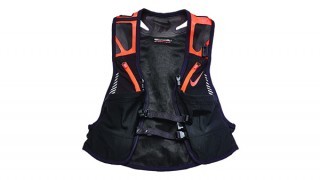
As summer gets closer, Competitor’s editors are trying out some new gear. Here’s what we’re loving:
Photo Gallery
1 of {count}
Back to Start
View Larger Image
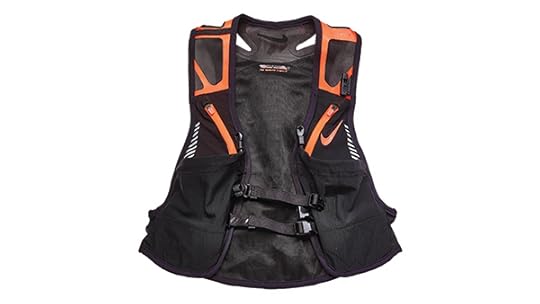
Nike Kiger Pack
“I’ve been upping my weekend mileage and getting out for some two- to three-hour runs and the new Kiger pack has done a great job holding my water, food and anything else I’ve had to take with me. It’s one of the best fitting packs I’ve ever worn and doesn’t bounce when you’re running in it. Also, the seams are pretty smooth and I didn’t have any chafing issues. You can’t carry a ton of gear in the rear sleeve, and I wish the front pockets were a little deeper for my bottles, but otherwise this pack does everything I need it to do for longer runs.” —Mario Fraioli, senior editor ($185, nike.com)
Competitor.com.
Galen Rupp Makes Sports Illustrated’s ‘Fittest 50’ List
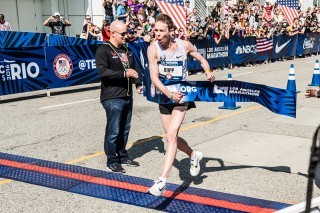
Photo: Ryan Bethke
Sports Illustrated put together a list sure to spark debate, ranking the 50 most fit male and female athletes in the world.
Among those who made the cut include a few distance runners. American distance star Galen Rupp makes the men’s list at No. 40, while Ethiopian track star Genzebe Dibaba ranks 47th on the women’s list. Obstacle-course racer Amelia Boone ranks 21st. Sprinter Usain Bolt and decathlete Ashton Eaton also make the men’s list.
Of Rupp, Sports Illustrated said “Not just another skinny distance runner, the 2012 Olympic 10,000-meter silver medalist is a gym rat whose multi-hour workouts include weights, plyometrics and even soccer and boxing drills. Under coach Alberto Salazar, the 30-year-old Rupp also been known to follow up a record setting race on the track with an immediate treadmill tempo run.”
Sports Illustrated said the athletes were selected on a variety of criteria, including strength, speed, endurance and agility.
MORE: Sports Illustrated’s Fittest 50
The post Galen Rupp Makes Sports Illustrated’s ‘Fittest 50’ List appeared first on Competitor.com.
Michele Gonzalez: Runner Mom ‘Hacks’
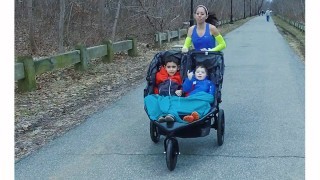
Having it all doesn’t come easy. For Iraqi vet turned marathoner, Michele Gonzalez, it means utilizing tricks of the trade so she can follow her passions of running 6-12 miles pre dawn, being a businesswoman in New York City, and being an involved mom of two young boys. Watch as she uncovers her runner mom “hacks” so she can have it all, and then some.
RELATED: Michele Gonzalez: How Running Fuels Life
The post Michele Gonzalez: Runner Mom ‘Hacks’ appeared first on Competitor.com.
Brooks Survey Explores the Reasons Behind Our Love of Running
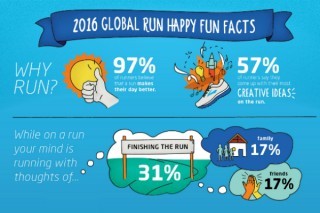
In celebration of Global Running Day on June 1st, Brooks Running conducted a worldwide survey of thousands of consumers who run two or more times a week. It’s an interesting look at our love of running and everything that goes along with it.
Here are a few of the more intriguing finds—the complete results can be found on Brooks Running’s blog:
The Power of Running
About 97 percent of runners thinks going for a run makes their day better. Most runners (57 percent) report that their best creative ideas come to them during runs.
Running and Selfies Go Together
Worldwide, nearly 60 percent of runners share their runs on social media. Facebook is the most popular platform. Some 35 percent of runners surveyed say they take selfies during their runs.
Women and Running
Women around the world report that the top concern when running is a lack of support from their sports bra (30 percent).
Of females in the U.S., 65 percent say they would wear their sports bra instead of their regular bra if they found the right fit.
Nearly half of female runners surveyed (48 percent) say they’ll run or consider running in just their sports bra. Women in the U.S. are most likely to ditch their shirt, while women in France are least likely.
Makeup or no? Some 56 percent of women say they wear makeup on the run at least sometimes, while 44 percent say they never would.
Running to the Bedroom
More than half of runners (54 percent) say the energy boost from running is a natural turn-on.
Brooks asked runners to compare their intimacy style to running. About 34 percent preferred the slow-and-steady style of a marathon, 37 percent compared it to intervals, and 19 percent compared it to—oddly—mud runs.
The post Brooks Survey Explores the Reasons Behind Our Love of Running appeared first on Competitor.com.
May 19, 2016
Learn From a Pro: Caroline Boller
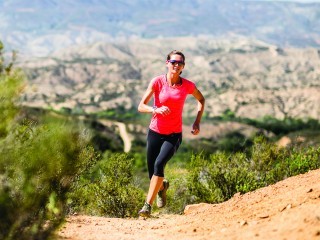
Photo: Myles Smythe/Michigan Bluff Photography
Caroline Boller, the in-house counsel for Terravant Wine Company, has made huge strides since she took up running in 2012. Now a member of the Nike Elite Trail team, she won the women’s USA Track & Field 50K national championship title in March with a time of 3:22:50, setting a new American 50K Masters 40–44 record in the process. In June she’ll compete in the Western States Endurance Run, where she placed eighth last summer in her debut at 100 miles. We caught up with the 41-year-old from Solvang, Calif., on what motivates her and the lessons she’s learned in the sport.
Why do you run?
I started running when my kids were pretty young. It was a great stress reliever and a way for me to have something that was just for me. Running makes me happy and it’s a way to challenge myself on a personal level.
Are you surprised at your success?
I never thought there was an athlete in me. Running has taught me you never know what you may be capable of until you try something that seems entirely outside your comfort zone.
What’s your favorite race distance?
I love the marathon distance for road. For trail, it’s definitely 100K. It’s a sweet spot of having the time to get in a rhythm without the mind-shattering exhaustion you get running a 100-miler.
What do you do on your rest day?
Well, I haven’t had a lot of them recently. I used to take one rest day a week, but my body felt very out of sorts. Now I have one day a week where I have a relatively short—8 miles—and easy run. It means I don’t have to crunch as many miles into a six-day week.
What’s Your typical pre-race meal?
The night before a race I go pretty light with just a salad and salmon. I do a little carbohydrate-focused eating in the days leading up to a race.
Post-race splurge?
I have lots of post-race fantasies but most of the time they don’t come true. After an ultra the idea of anything sweet isn’t appealing. Then I always think about getting a massage, but it’s been a long time since I’ve had one. Life gets busy.
Last good book?
“Two Hours: The Quest to Run the Impossible Marathon” by Ed Caesar. It was really good.
What lessons have you learned as a runner?
It’s twofold. More is not always more—I tend to push too hard. And I do not yet have the depth of knowledge or perspective to self-coach, so having a coach is really important to me.
The post Learn From a Pro: Caroline Boller appeared first on Competitor.com.
Michele Gonzalez: How Running Fuels Her Life

Marathoner and blogger, Michele Gonzalez, makes you believe you can have it all—if you’re willing to work for it. Awake at 3:45 a.m., the Iraqi vet and mom of two runs 6-12 miles each morning, works in finance in New York City by day, then races home to bank family time by night. On the outside, Michele is busy. On the inside, she has it all. Follow her story here, then look for Episode 2, coming soon.
The post Michele Gonzalez: How Running Fuels Her Life appeared first on Competitor.com.
The Top 4 Training Mistakes in Ultrarunning

Adapted with permission of VeloPress from Training Essentials for Ultrarunning by Jason Koop, coach to elite ultramarathoners. In his book, Koop reveals his highly effective ultramarathon training methods for ultrarunners of all abilities.
The world of ultrarunning is changing. People are starting to pay far more attention to their training and are realizing that if they do the right things leading up to the event, they will give themselves the best chance at success. Still, there are many misconceptions and errors in current training methodologies for ultrarunners.
Time and time again, I see ultrarunners making the same mistakes. They unnecessarily prioritize mileage over focused training. They train too slow. They do not train for the specific demands of a particular event. Correct training methodology not only fixes these problems but will also optimally prepare the athlete for success. Later in the book I will dive deep into the whys and hows of best training practices. For now, let’s take a 10,000-foot view of the top mistakes I see in training.
Mistakes 1: The N of 1
I have my share of personal ultramarathon experience. I have finished a lot of ultras and competed in some of the toughest races in the world. I’ve had both great days and very bad ones. I’ve DNFed when I shouldn’t have, and I’ve finished races when I should have dropped out. I’ve trained for speed, vertical, endurance, and every other aspect I preach to my athletes. And I’ve improved tremendously as an ultrarunner. Despite all this, I use very little of my personal experience when coaching an athlete. In research papers, the number of subjects in an experiment is referred to as the N, and the best studies benefit from a large N. I acutely realize that I am my own N of 1. If I ever use an “I” statement in my coaching, I consider it a flaw. A coach should certainly take his or her own experience into account. However, relying on that experience, the N of 1, is the ultimate coaching flaw. Yet it’s one I see over and over again.
I have seen dozens of athletes fail to improve because they are relying on an N of 1 to guide them. Ultrarunning coaches routinely regurgitate their personal training for their athletes. And runners who coach themselves tend to insert too much of their own bias into the process. Others ask their peers what they have done, relying on small likelihood that the N of 1 will also work for them.
Mistake 2: Too Much Focus on Volume
Ultramarathons are long, sometimes taking a day or even two to complete. Athletes often look at the prospect of locomoting for hours on end and feel overwhelmed, thinking, “If I’m going to be out there forever, I better run and hike in training as much as possible.” They make the classic sacrifice of substituting more volume in place of intensity. They train low and slow, and they do it all the time. While this type of training does produce limited benefits for the ultramarathon athlete, it carries significant risk, and the point of diminishing returns is reached quickly. Quite simply, you run more miles but don’t get enough out of them.
Mistake 3: Not Enough Intensity
Athletes often think, “I’ll be running slowly during my race, so I don’t need to run fast during training.” This thinking is not entirely flawed. It’s not that you need to run spectacularly fast but rather that you need to focus on a range of different intensities. Developing specific parts of your physiology, through focused intensity during different parts of the year, produces a more fit and ready athlete, regardless of your background and goals. For those of you reading this who do in fact incorporate some sort of intensity, I applaud you and encourage you to give yourself a pat on the back.
However, even when athletes incorporate intensity, I have often found it to be sporadic and unsystematic. They do different intensities during the week (say, a speed session on Tuesday and a tempo run on Thursday) or not enough of the same intensity all at once. Yes, some intensity is better than none, but focused and concentrated intensity, applied systematically over a period of weeks, is the best way to become a complete athlete.
Mistake 4: Lack of Specificity
It’s easy to generalize that all ultramarathons are long and done at a low intensity. Although this is oftentimes the case, you can train and prepare for specific elements within individual races. How steep are the climbs? How hot is the race? How far apart are the aid stations? What is the terrain like? These are elements of specificity you can train for. For example, consider trail versus road. Athletes understand that if the goal event is on trail, they need to train predominantly on trail. Simple, right? Yet many athletes, even the best, make the mistake of changing their terrain specificity in the weeks leading up to a critical race.
There is fantastic track in Chamonix, France, just next to the starting line of the Ultra-Trail du Mont-Blanc (UTMB). It’s a picturesque setting, with the stunning Alps framing the background. For some odd reason, when thousands of athletes descend upon Chamonix every August for the 100-mile UTMB and its companion races, many of them feel the need to do mile repeats and 5K time trials around the pristine, smooth track surface. The last time I checked, there’s not one speck of track surface on any of the trails around Chamonix. The concept of specificity extends beyond the surface under your feet. You can, and should, extend that concept to every aspect of the race. The degree to which you can apply specificity to training makes you better prepared for all the elements on race day, including the intensity, duration, environmental conditions, and whatever other troubles and tribulations you might encounter.
***
Jason Koop is the Director of Coaching for CTS, coach to elite ultrarunners, and an elite ultramarathoner. His new book Training Essentials for Ultrarunning reveals his highly effective ultramarathon training methods. The book is now available in bookstores, run shops, and online. Learn more at velopress.com/koop.
The post The Top 4 Training Mistakes in Ultrarunning appeared first on Competitor.com.
The Benefits of Speeding Up Recovery In Interval Workouts
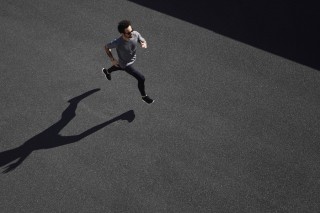
Most runners and coaches tend to focus exclusively on the fast portions of an interval workout, devoting little thought or importance to the recovery period between repetitions. In other words, interval workouts’ directives will often dictate the precise duration and intensity (or pace) for the fast repetition (e.g. “8 x 400 meters at 5K race pace”) but merely duration or distance for the recovery interval (e.g. “1-minute rest” or “200-meter jog”).
As a result, recovery intervals are often an afterthought—a rest period during which intensity is irrelevant. By refocusing on the recovery portion of interval workouts, however, runners can achieve a wider array of benefits. Specifically, when the intensity of the recovery interval is considered in addition to duration, you can dramatically alter the training effect of a workout.
“When you look at workouts, most of the time people are only concerned with the speed and the length of [the repeat]… and the recovery portion kind of gets neglected,” explains University of Houston cross country coach Steve Magness, who also coaches a small stable of elite post-collegiate athletes. “I think that’s a mistake because how you manipulate the recovery portion can dictate how you feel during the actual running of [the fast segment]. You can manipulate the stress response by manipulating nothing other than the recovery portion.”
The key to rethinking the recovery intervals is to visualize them not as rest, but rather as a “float”—a quality aerobic pace that is a bit slower than a traditional tempo but certainly more than a jog. Workouts with quick recovery intervals offer a host of benefits for all distance runners, from beginners to elites, mid-distance specialists to ultramarathoners. Magness says, “[athletes] will ask, ‘How fast do you want the fast [segment]?’ I’ll say, ‘As fast as you can maintain while still keeping your recovery [interval] at a quick, rolling tempo.’ They quickly learn how hard they can press on the hard section while still being able to recover [at a quality pace].”
“If people don’t get the feeling, I’ll say… ‘I want [the recovery segment] just slower than marathon pace’” says Magness. He also characterizes this pace as how you feel at the end of a regular distance run on a day when you’re feeling good and start to drop the pace. “You’re not pushing [too hard], but just feeling good and pressing it a little bit,” he says. That’s the recovery pace to aim for—hard to describe in words, but easy enough to learn once you try it in training. Magness summarizes, “If I could classify it in any way, it’s de-emphasizing the fast section and emphasizing the recovery section.”
Great Minds Paved The Path
The concept of “floating” recovery intervals isn’t new but it’s underutilized by many coaches and athletes. Top coaches from around the world have employed some variation on this theme for some time.
One coach who helped pioneer “float” recoveries is Australian Pat Clohessy, who worked with former marathon world-record holder Rob “Deek” de Castella. Clohessy regularly used an 8 x 400-meter workout with 200-meter “float” recoveries in Deek’s and others’ training. In this session, sometimes called “Deek’s Quarters” or “Aussie Quarters,” de Castella would run the “floats” quickly enough that he could cover the workout’s 3 miles in about 14 minutes, averaging near his anaerobic threshold.
In the same vein, Australian great Steve Moneghetti—a 2:08 marathoner and World Championships bronze medalist—co-developed a 20-minute workout now known as the “Mona” Fartlek. The workout consists of faster repetitions of 2 x 90 seconds, 4 x 60 seconds, 4 x 30 seconds, and 4 x 15 seconds, all with equal duration “float” recoveries. Moneghetti’s pace would only vary about 30 seconds per mile between the faster segments and the “float” recoveries. “I used to straddle my anaerobic threshold (just over in the repetitions and just under in the ‘floats’) which is the ideal training to push up the threshold,” he explains.
Famed marathon coach Renato Canova is also a proponent of quick recoveries. A workout like 3 x 3-5 miles at marathon pace is highly race specific due to the volume of running at race pace, but Canova enhances the workout’s benefits greatly by prescribing a recovery segment of one mile at a mere 15 to 30 seconds slower than marathon pace.
RELATED: Alternating 400s
What’s In It For Me?
Quicker recovery intervals help runners learn how to better deal with the byproducts of fatigue.
“[With] a short recovery ‘float’… you’re learning how to process and deal with [fatigue] at a still pretty high-end aerobic pace,” says Magness. “I think that—especially for 5K and 10K runners—is huge.”
Michael Smith, Georgetown University’s director of cross country and track & field, agrees, saying “You need to teach the body to clear lactate while running… [not] while standing or walking.”
Blending different paces together in a workout allows you to target multiple capacities. Citing Clohessy’s “Aussie Quarters” session as an example, Magness notes that it can act as aerobic maintenance—due to the workout averaging near anaerobic threshold pace—as well as being more specific to mid-distance events due to the faster-paced running and erratic, inconsistent rhythm. In other words, for the 10K and shorter races, it can be more event-specific than a tempo run, yet offer many similar benefits aerobically. “It’s a great way to practice subtle shifts of gears… which I think is a [great] talent to have,” Magness says.
Quick recovery segments during interval workouts will keep a runner in check and prevent them from pushing too hard on the faster segments. “[High] intensity is high-risk,” Smith explains, and “[quick recovery segments] make sure you don’t get out of control on your intensity.” Smith stresses that for beginners who are still developing their capacity to work, these types of workouts are important. “You’re going to really improve your [capacity to work] and total more quality running,” he says. “And in a safer way, too.”
Learning to recover at a quick pace can be vital to working through low patches in longer races like the marathon or ultra marathons, says Magness. “If you can recover and learn to feel OK running 15 to 20 seconds slower than marathon pace in the middle of a workout, then you have that weapon in your back pocket when it comes to [the] marathon race,” he explains. Developing this skill, both psychologically and physiologically, can be the difference between rallying and finishing strong or unraveling and running positive splits.
Lastly, interval workouts with quicker recovery reps are easily adjustable to a number of different environments, whether you’re running by feel or trying to hit specific splits, and can be run on the track, road or even trails.
RELATED: Everything Runners Need To Know About Interval Workouts
Try These Quick-Recovery Workouts
Shorter Workouts
Aussie Quarters
Run 8 x 400 meters with 200 meters “float” recovery. You should be able to average near your anaerobic threshold pace (roughly the pace you could maintain in a one-hour race). The focus should be on maintaining a quality pace during the “float.”
A similar workout to try is the Mona Fartlek, outlined above. The Mona Fartlek has the advantage of being time-based, making it easy to perform anywhere. Athletes like Deek and Moneghetti would run these workouts almost every week of the year—they are that useful and versatile.
1-Minute Alternations
Once you’ve mastered Aussie Quarters, try running 10 sets of 1:00 “on” with 1:00 “float” (20 minutes of total running). Over several weeks or months, as you build strength and your capacity for work, you can extend these 1-minute alternations gradually to 15 or 20 sets. When Magness was preparing professional runner Sara Hall for a half marathon, he had her progress this workout to 20 sets.
Longer Workouts
Half-Mile Alternations
Alternate a half-mile “on” with a half-mile “float” for a distance of 4 to 12 miles, extending your total distance at you get stronger over a couple months. To make this workout specific to an event like the half marathon or marathon, aim for your alternations to average out to your goal race pace.
For the half marathon, a reasonable amount of work would be 4 to 8 miles of these alternations, while for the marathon, 6 to 12 miles is better. By averaging race pace, you are developing specific endurance. Magness explains, “You’re extending your ability to handle a race-specific pace, while also being able to recover and deal with [fatigue] at the same time.”
Marathon Pace Repeats
Run repeats of 2 or 3 miles at marathon pace (MP) with 1-mile recoveries 20 to 30 seconds-per-mile slower than MP. Start with 4 x 2 miles at MP with 1-mile flat recoveries between repetitions and gradually build your total volume over a number of weeks. A 4-week progression could be structured as follows: 3 x 3 miles, then 4 x 3 miles, then 7 x 2 miles, then 5 x 3 miles, all with 1-mile floating recoveries between repetitions at 20 to 30 seconds slower than MP.
Many marathoners will run marathon-pace tempo runs, but with these quick recoveries you can cover a greater total distance while still roughly averaging marathon pace. As with the half-mile alternations that average out to MP, this workout will build specific endurance.
Design Your Own Workouts
When it comes to running workouts with quick recovery intervals, the sessions outlined above are only a few of the possibilities. Use your imagination and get creative by using different distances, time intervals, landmarks, or topographic features (especially if running a trail) to structure your workout.
The longer the workout, the more specific it will be to longer events like the marathon and ultramarathons, while shorter workouts like the Mona Fartlek will be more specific to the 5K and 10K. Even still, both longer and shorter versions of these workouts will be useful to most runners. “The key with all this,” Magness concludes, “is a shifting of the mindset… to run the recovery section faster, emphasizing that.”
The post The Benefits of Speeding Up Recovery In Interval Workouts appeared first on Competitor.com.
Video: College Runner Ruptures Achilles, Finishes Race
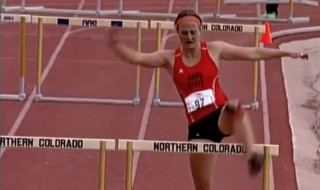
A little dose of motivation comes to us from Idaho State hurdler Shelby Erdahl, who was competing in the finals of the 400-meter hurdles at the Big Sky Track and Field championships last weekend when she completely ruptured her left Achilles early in the race.
Erdahl hobbled up and over hurdles and crossed the finish line, earning a team point for Idaho State and inspiring everyone who was watching.
The post Video: College Runner Ruptures Achilles, Finishes Race appeared first on Competitor.com.
Ryan Hall's Blog
- Ryan Hall's profile
- 21 followers



